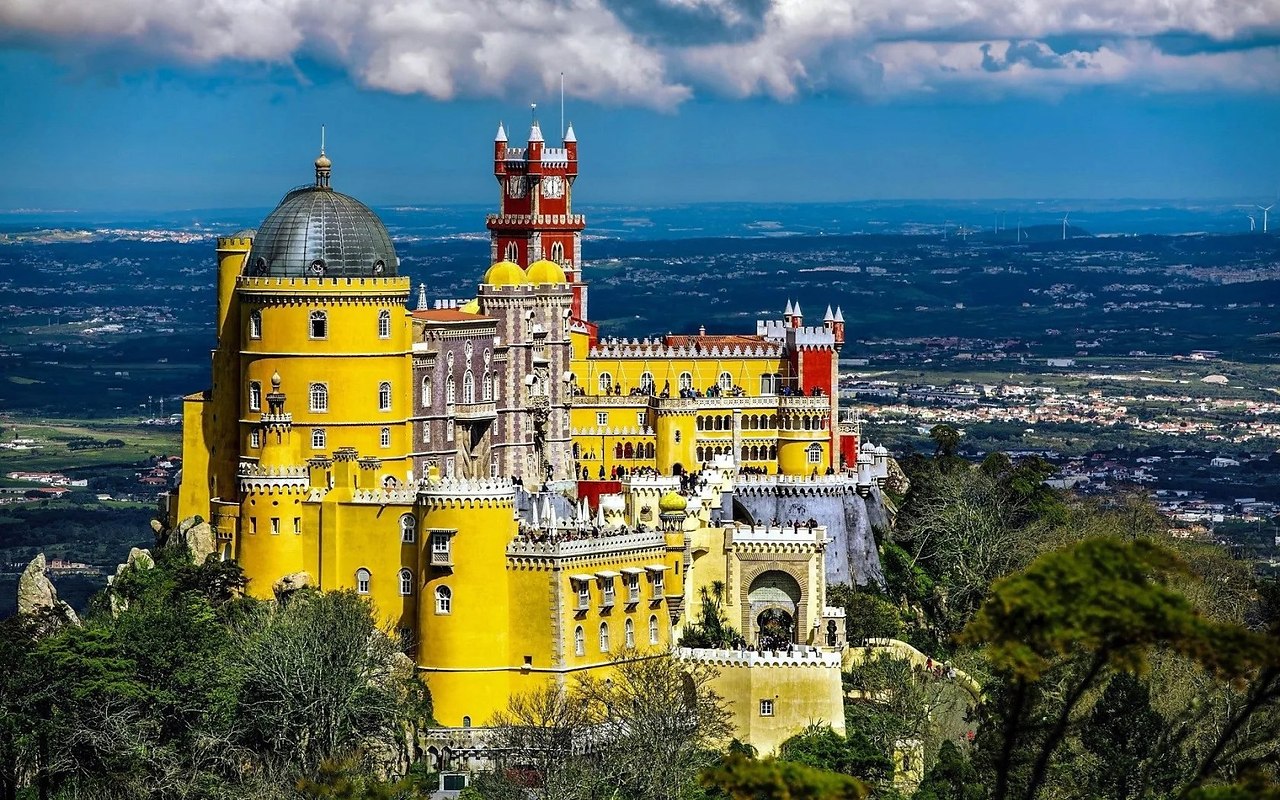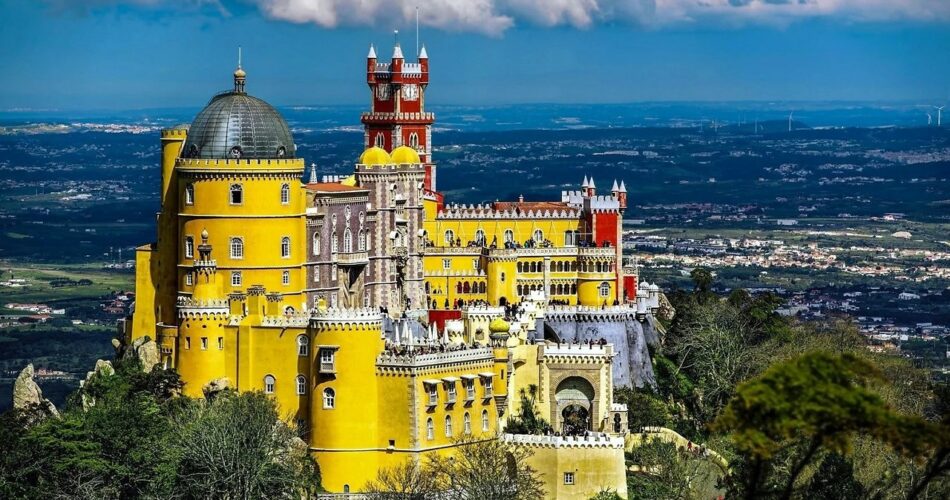Europe encompasses a wealth of architectural masterpieces, including imposing fortresses that were hugely important medieval buildings, each with its own story. From fairytale fantasies to intimidating strongholds and royal residences, here is our guide to the coolest castles in Europe.
Eilean Donan Castle, Scotland
The classic mossy, moody castle, Eilean Donan was founded in the 13th century on a tiny tidal island where three lochs meet on Scotland’s northwest coast, and it is said that Robert the Bruce sought shelter here in 1306. After a series of Jacobite risings in the 18th century, the castle was left dilapidated until restoration began in 1917. Since then, the fully renovated Eilean Donan has had starring appearances in movies including Highlander and The World is Not Enough, and daily tours with audio guides are available to visitors.
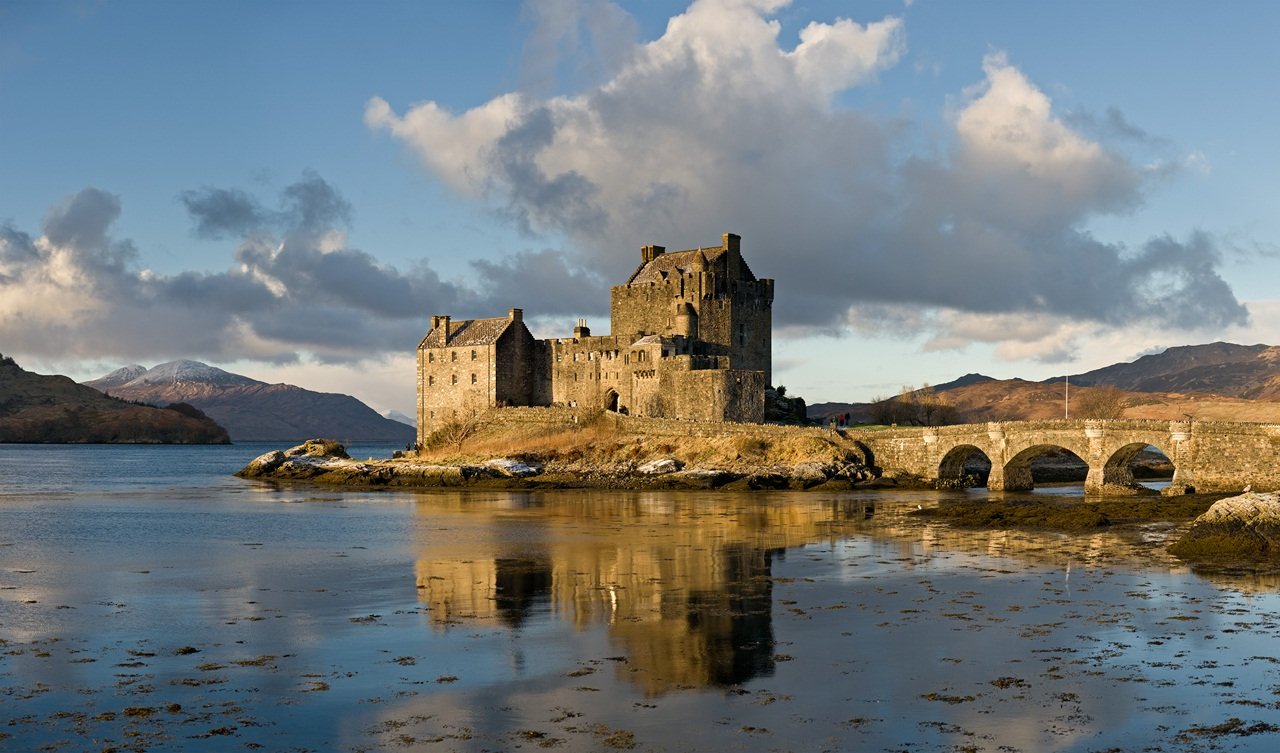
Neuschwanstein Castle, Germany
Here it is: the world’s greatest fairytale castle, inspiration for Disney’s Sleeping Beauty and more. Built as a hilltop retreat in the late 19th century, turreted Neuschwanstein Castle was commissioned by Ludwig II, also known as 'The Fairytale King' and, less generously, as 'Mad King Ludwig'. Construction began in 1868, but was not completed until 1892, six years after his death. Extravagantly decorated interiors feature picture cycles inspired by the medieval legends that informed the operas of German composer Richard Wagner, to whom King Ludwig dedicated the castle.
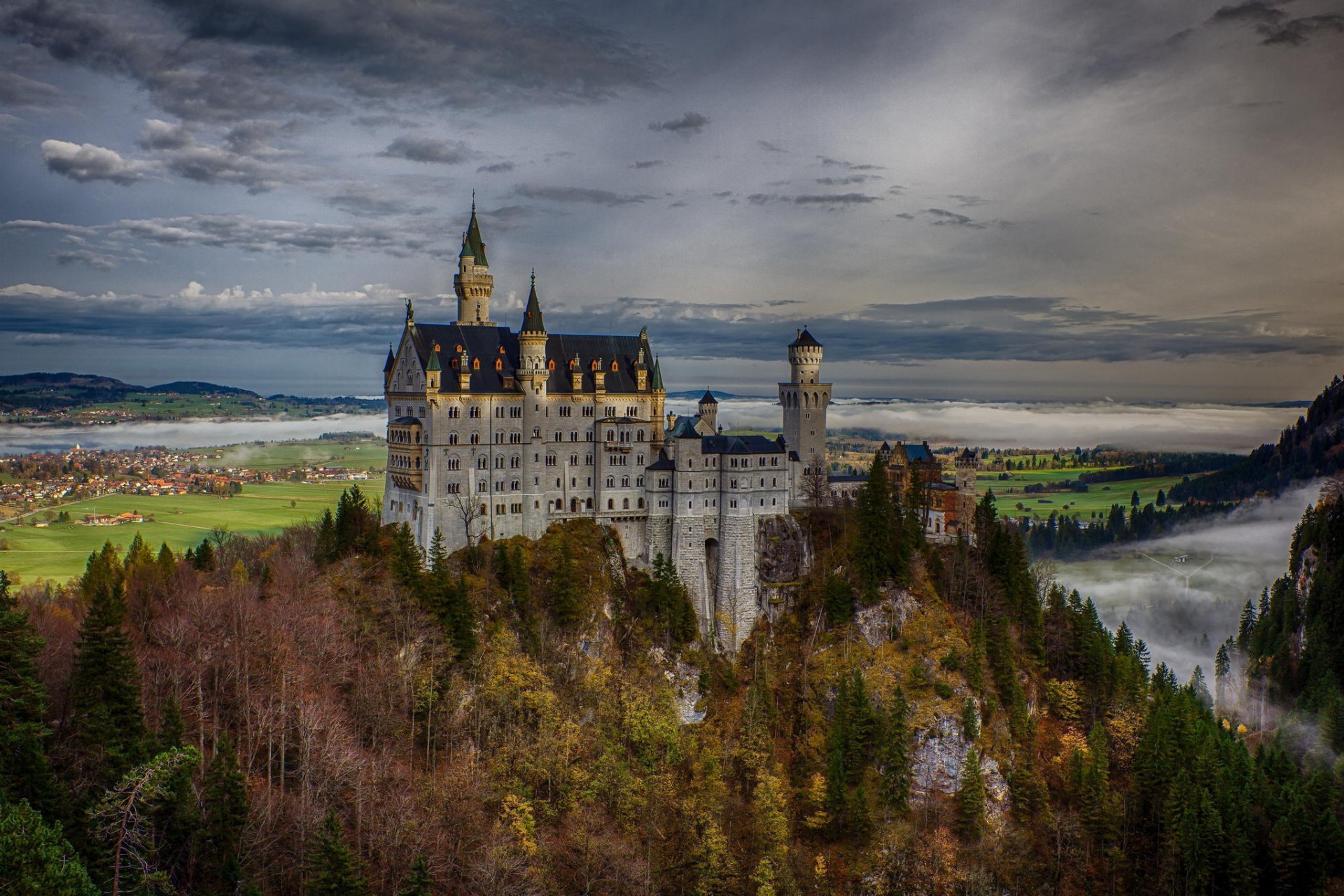
Carreg Cennen, Wales
Built atop a limestone precipice in Brecon Beacons National Park in 1197, Carreg Cennen has roots dating back to prehistoric times. It’s thought the site was used as an Iron Age hill fort and Roman coins have been found here. The remains standing today date from the 13th century, the castle having been reduced to ruins by hundreds of Yorkists in 1462 during the War of the Roses when it was being used as a Lancastrian stronghold. The sheer cliff faces on all sides had previously made Carreg Cennen pretty much impenetrable to invaders.
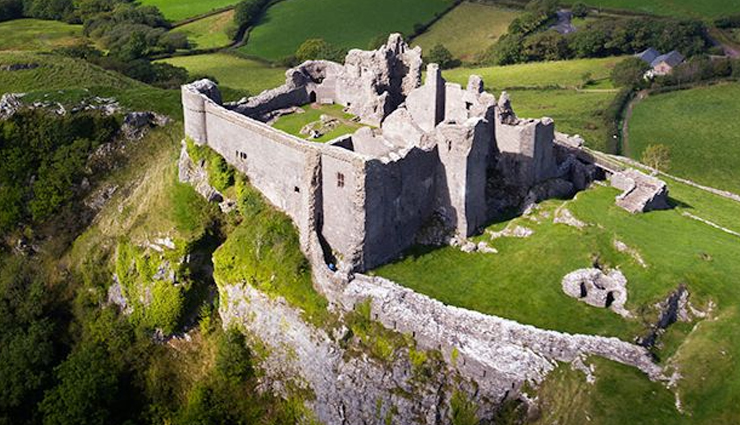
Windsor Castle, England
How could we skip England’s most famous castle on a list like this? Queen Elizabeth’s favourite Royal residence, Windsor Castle is the world's largest and oldest occupied castle, and a truly stunning sight – vast, immaculate and classically elegant. Nearly a million tourists flock to the castle every year, and its many attractions include extravagantly furnished and decorated State Apartments, and the Royal art collection.
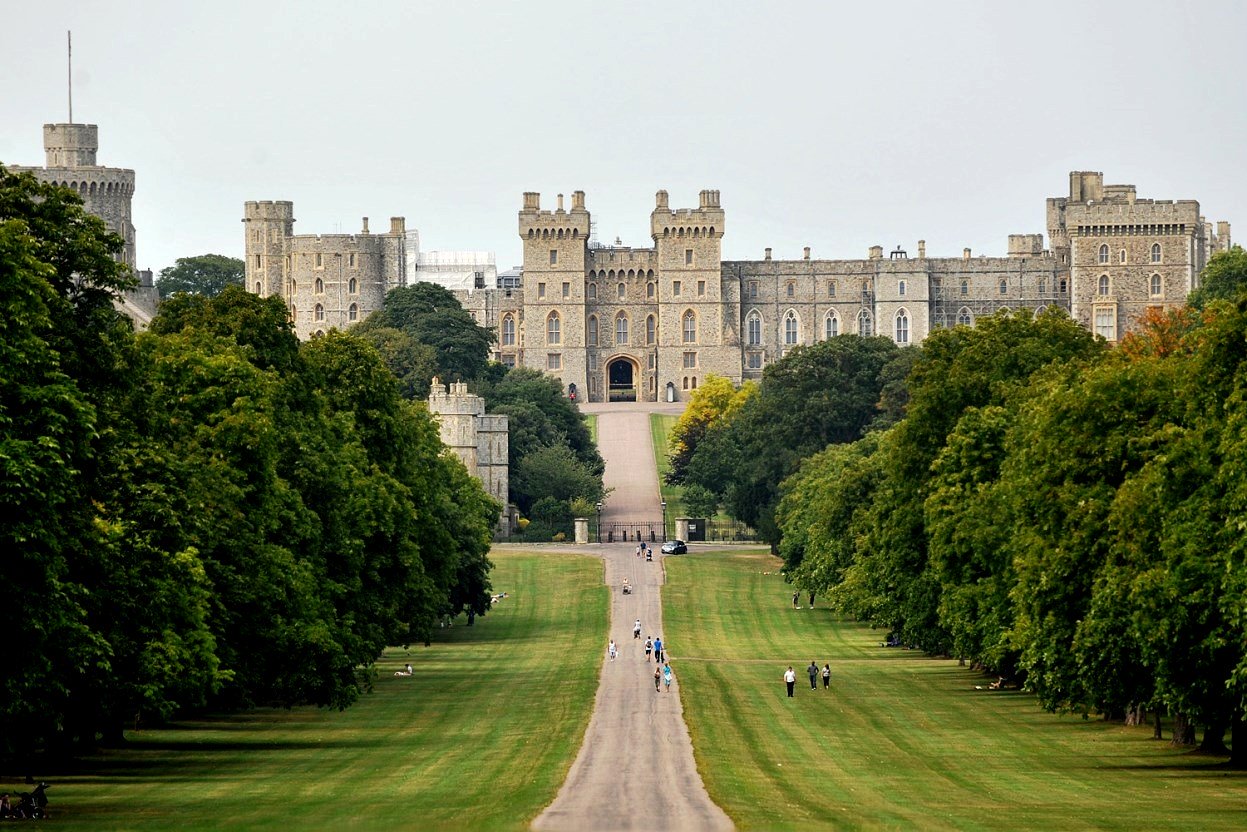
Corvin Castle, Romania
A huge and spectacular Rennaissance-Gothic style construction, Corvin Castle was built over a former fortification on a rock rising above the Zlaști River. An imposing edifice with multiple bastions and towers, it features numerous carved stone balconies and windows. Having served as a fortress until the mid-14th century, it later became the residence of Transylvania’s governor John Hunyadi and was subsequently transformed into a magnificent castle with high buttresses, inner courtyards and dozens of rooms hung with medieval art.
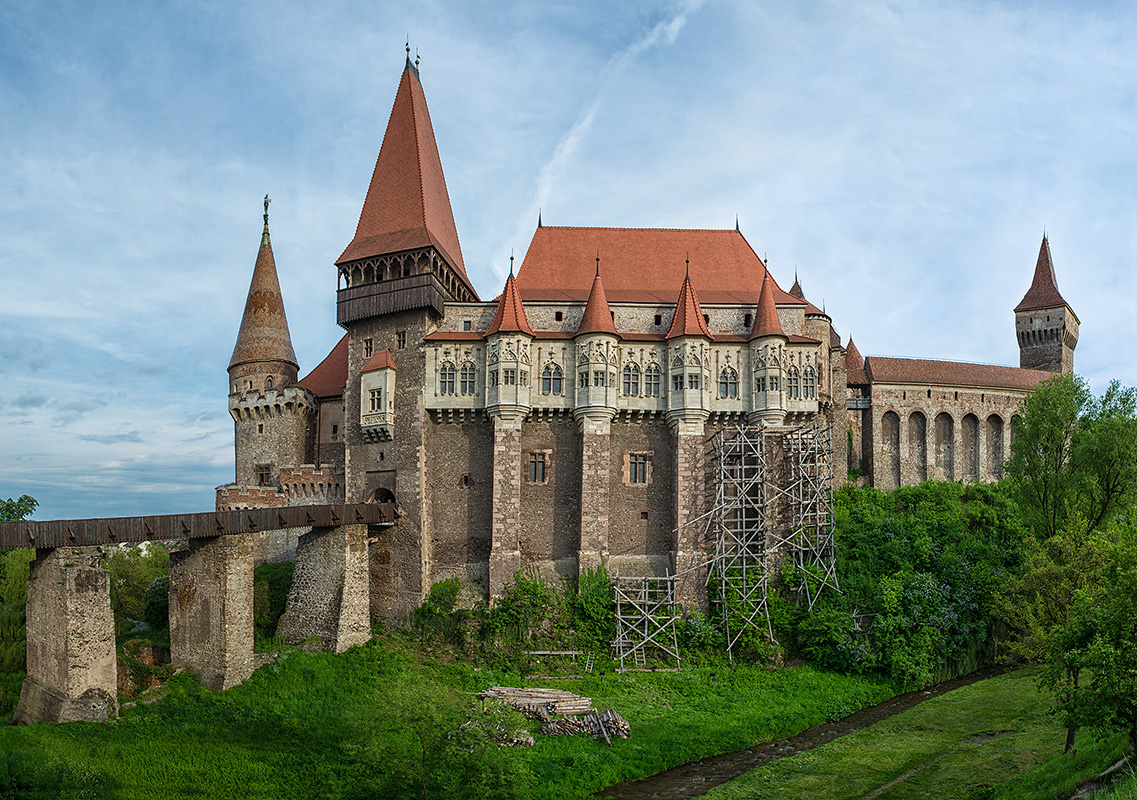
Château du Haut-Kœnigsbourg, France
One for wine buffs, the fortified Château du Haut-Kœnigsbourg overlooks the gorgeous Alsace Wine Route, meaning you can indulge in some serious refreshment once you’ve taken in the incredible views across Alsace (and on a clear day, Germany’s Black Forest and the Swiss Alps). Dating from the 12th century, the pink sandstone mountain fortress was destroyed for a second time in 1633 and lay desolate for 200 years before finally beginning an extended restoration process in 1900.
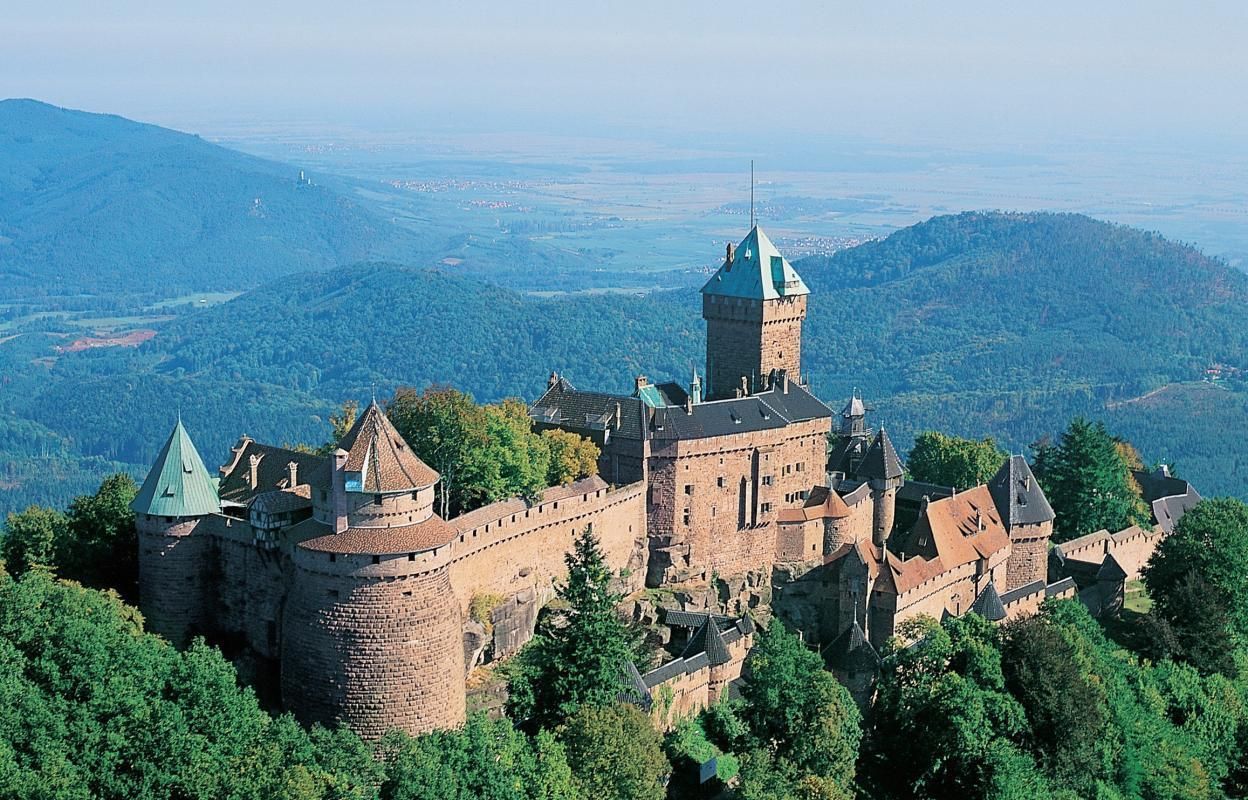
Palace of Pena, Portugal
Now a national monument in Portugal, the Palace of Pena originated in the Middle Ages as a tiny chapel perched on top of a craggy peak in the Sintra hills outside Lisbon. It later became a monastery, but having been ruined by an earthquake in 1755, it was gloriously reimagined and extended by King Ferdinand II in 1842 as a Romantic-style summer palace, complete with battlements, watchtowers, Moorish arches and a drawbridge.
